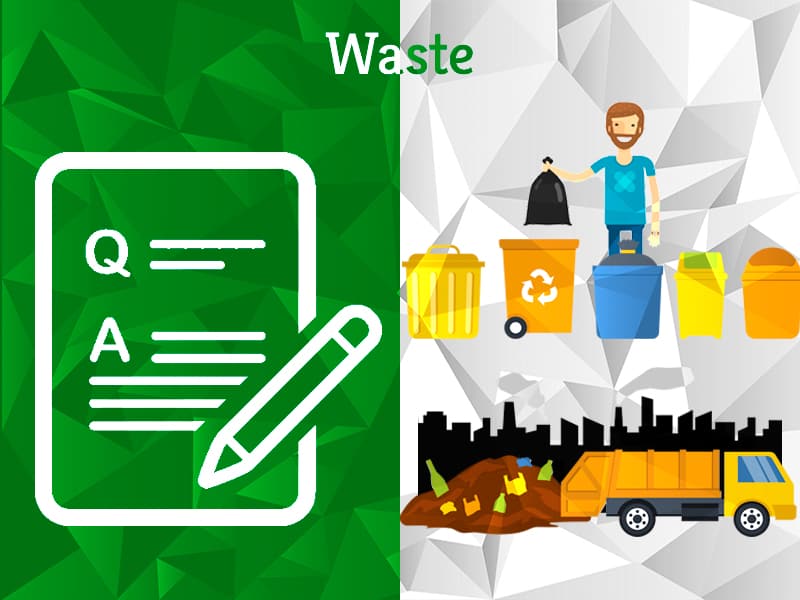No products in the cart.
Summary

Article Name
What are the different types of Construction Waste?
Description
Construction and Infrastructure industries use the widest variety of materials and objects leading to the generation of a wide variety of waste.
Author
Team GreenSutra
Publisher Name
GreenSutra
Publisher Logo
Question Tags: actonclimate, construction waste, global warming, greenStories, greensutra, pollution, solid waste management, Waste
1 Answers
Best Answer
 Team GreenSutra® Staff answered 6 years ago
Team GreenSutra® Staff answered 6 years ago
Construction waste is one of the most recovered and recycled one.
Construction waste includes a wide variety of materials. Some of this construction waste can be recycled while some is considered to be hazardous in nature. To effectively manage construction waste, it is important to identify and classify the types of construction waste.
Types of Construction Waste
Based on the type of material, construction waste can be classified into the following types:
- Concrete, Bricks, Tiles and Ceramics
- Concrete – Non-Hazardous Waste
- Bricks – Non-Hazardous Waste
- Tiles & Ceramics – Non-Hazardous Waste
- Concrete, Bricks, Tiles & Ceramics (alone or in mixtures containing hazardous substances) – Hazardous Waste
- Concrete, bricks, tiles and ceramics in mixtures, containing no hazardous substances – Non-Hazardous Waste
- Wood, Glass & Plastic
- Untreated Wood – Non-Hazardous Waste
- Uncontaminated Glass – Non-Hazardous Waste
- Plastic (Excluding Packaging Plastic) – Non-Hazardous Waste
- Treated Wood (Alone or in Mixtures Containing Hazardous Substances)- Hazardous Waste
- Treated Glass (Alone or in Mixtures Containing Hazardous Substances) – Hazardous Waste
- Treated Plastic (Alone or in Mixtures Containing Hazardous Substances) – Hazardous Waste
- Bituminous Mixtures, Coal Tar & Tar
- Bituminous Mixtures containing Coal Tar – Hazardous Waste
- Other Bituminous Mixtures – Non-Hazardous Waste
- Coal Tar & Tarred Products – Hazardous Waste
- Metallic Waste (Includes Electrical Wires and Cable)
- Copper – Non-Hazardous Waste
- Brass – Non-Hazardous Waste
- Bronze – Non-Hazardous Waste
- Lead – Non-Hazardous Waste
- Iron – Non-Hazardous Waste
- Steel – Non-Hazardous Waste
- Tin – Non-Hazardous Waste
- Mixed Metals – Non-Hazardous Waste
- Metals Containing Hazardous Substances – Hazardous Waste
- Cables containing Oil – Hazardous Waste
- Cables containing Coal Tar – Hazardous Waste
- Cables containing other hazardous substances
- Other Cables – Non-Hazardous Waste
- Soil, Contaminated Soil, Stones & Dredging Spoil
- Soil containing hazardous substances – Hazardous Waste
- Stones containing hazardous substances – Hazardous Waste
- Other Soil – Non-Hazardous Waste
- Other Stones – Non-Hazardous Waste
- Dredging Spoil containing hazardous substances – Hazardous Waste
- Other Dredging Spoil – Non-Hazardous Waste
- Gypsum
- Gypsum Materials – Non-Hazardous Waste
- Other Gypsum Materials containing hazardous substances- Hazardous Waste
- Insulation, FiberGlass & Asbestos
- Insulation Containing Asbestos – Hazardous Waste
- Fiberglass – Hazardous Waste
- FRP – Hazardous Waste
- Other Insulation Containing Hazardous Substances – Hazardous Waste
- Other Insulation Materials – Non-Hazardous Waste
- Other Construction Materials -Hazardous Waste
- Cement
- Unused Cement – Hazardous Waste
- Unset Cement – Hazardous Waste
- Paints & Varnishes
- Paint Cans – Hazardous Waste
- Paint Remover – Hazardous Waste
- Varnish Remover – Hazardous Waste
- Organic Solvents – Hazardous Waste
- Other Hazardous Substances – Hazardous Waste
- Adhesives & Sealants
- Adhesive Containers – Hazardous Waste
- Sealant Containers – Hazardous Waste
